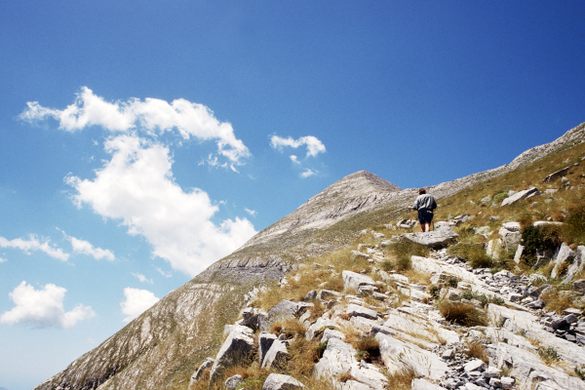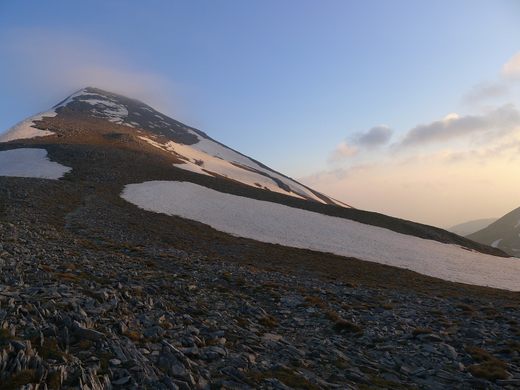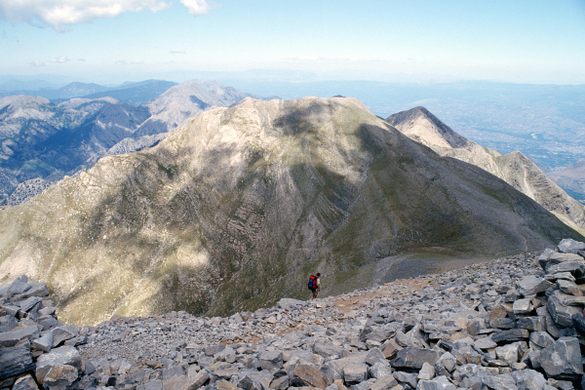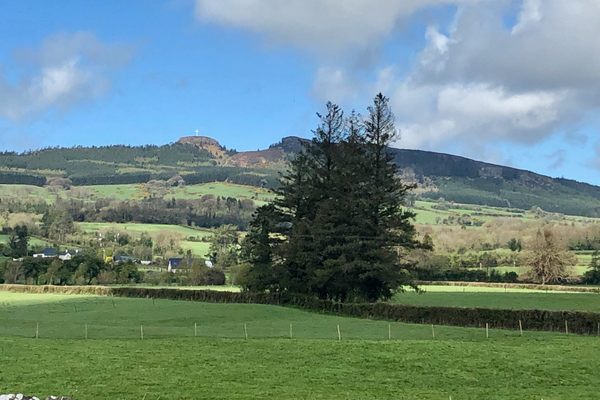Pyramid on Mount Taygetos
The top of the holy mountain for the ancient Spartans looks like a pyramid—is it man-made or a natural phenomenon?
At the top of Mount Taygetos, also known as Pyramida or Profitis Ilias, visitors can enjoy breathtaking panoramic views of the surrounding region. Mount Taygetos is the highest mountain range in the Peloponnese, rising to a height of over 2,400 meters. The top of the mountain comprises large, limestone blocks in a pyramidal shape.
In Greek mythology, this mountain was associated with the nymph Taygete, which it where it gets its name. The mountain was important to the ancient Spartans. It was part of the natural defenses around Sparta, and some sources say that criminals were thrown into a chasm on the mountain as punishment.
The pyramidal peak of Profitis Ilias has sparked debate about whether it was a natural formation or a human creation. The near-perfect shape and the apparent leveling at its base have led some to believe that the mountaintop was shaped by human hands. Others say that it is a coincidence, and the shape is merely a product of the forces that shape every mountain.
At the summit, visitors can take in the stunning views of the Aegean Sea to the east and the rugged landscape of the Mani Peninsula to the west. The mountain is also home to a number of rare and endangered species, including the Taygetos oak tree and the critically endangered Greek fir.
Know Before You Go
For adventurous hikers, there are several trails leading to the summit, offering a challenging but rewarding experience. Whether you're a nature lover or simply seeking stunning views, a trip to the top of Mount Taygetos is not to be missed.















Follow us on Twitter to get the latest on the world's hidden wonders.
Like us on Facebook to get the latest on the world's hidden wonders.
Follow us on Twitter Like us on Facebook